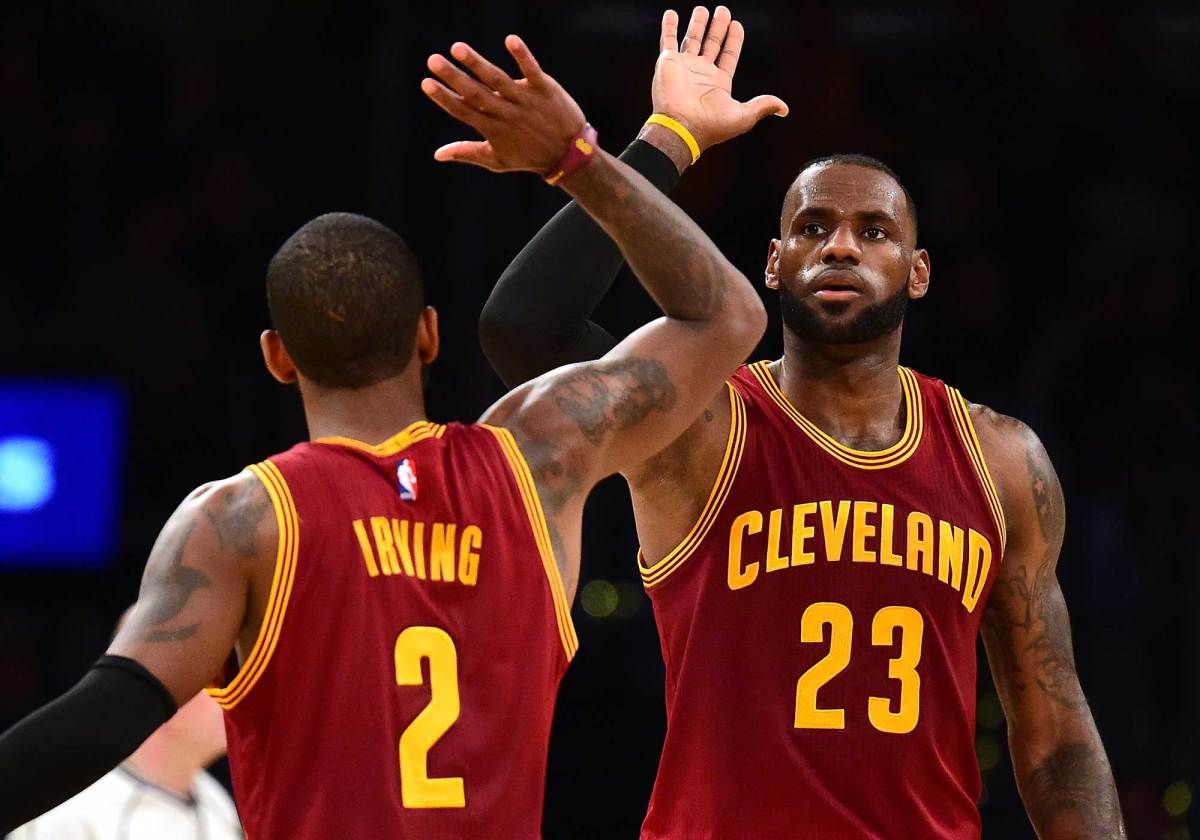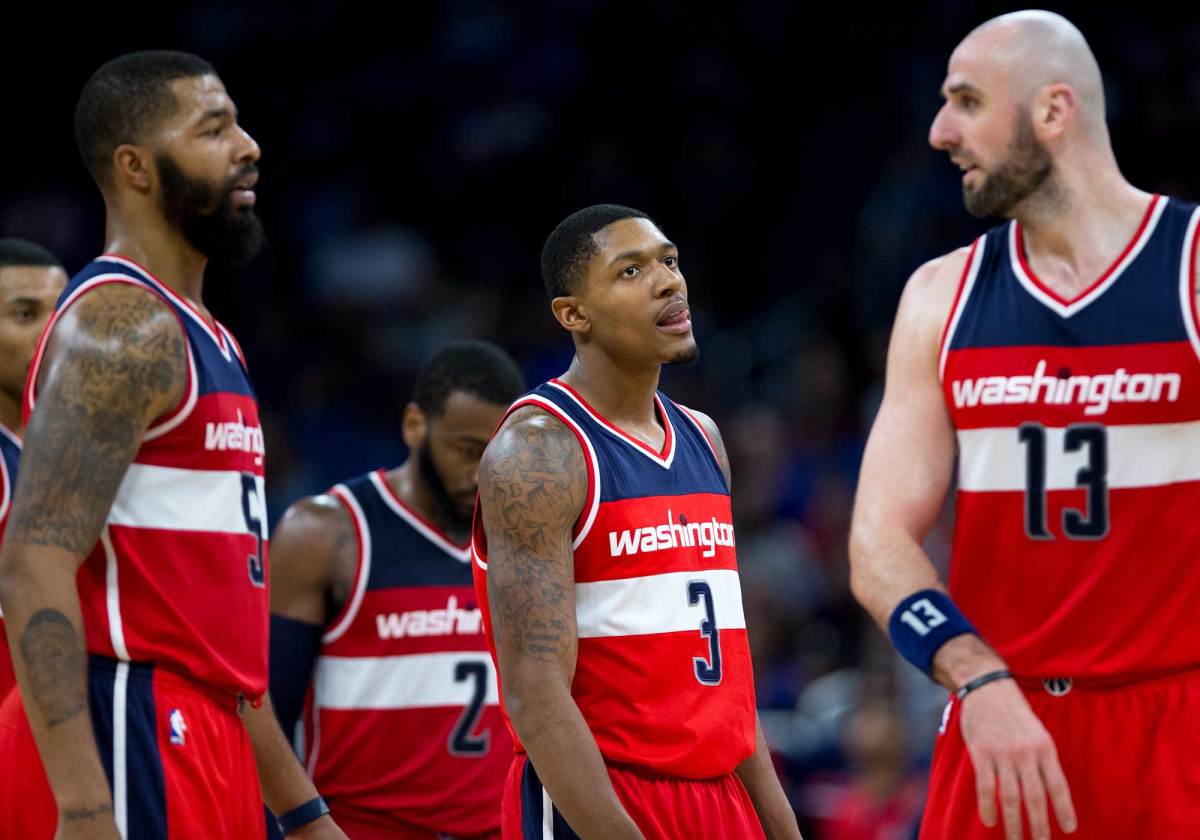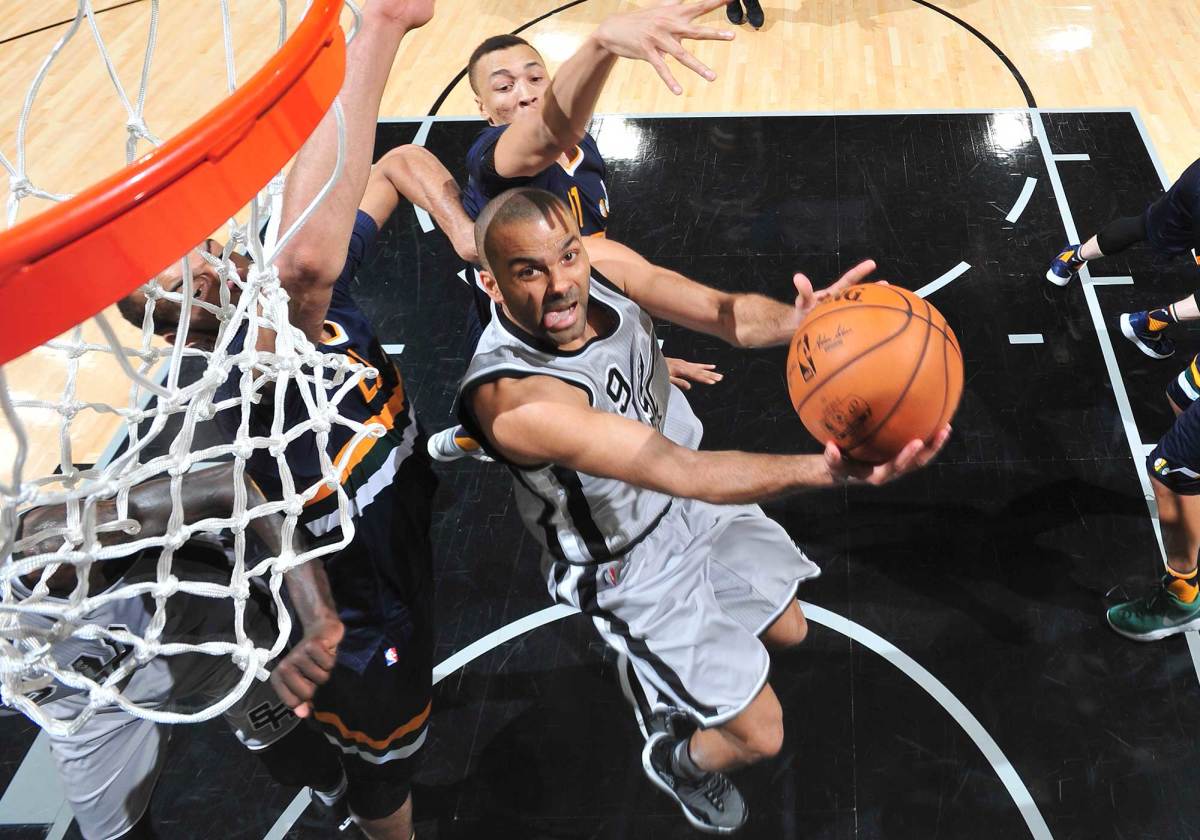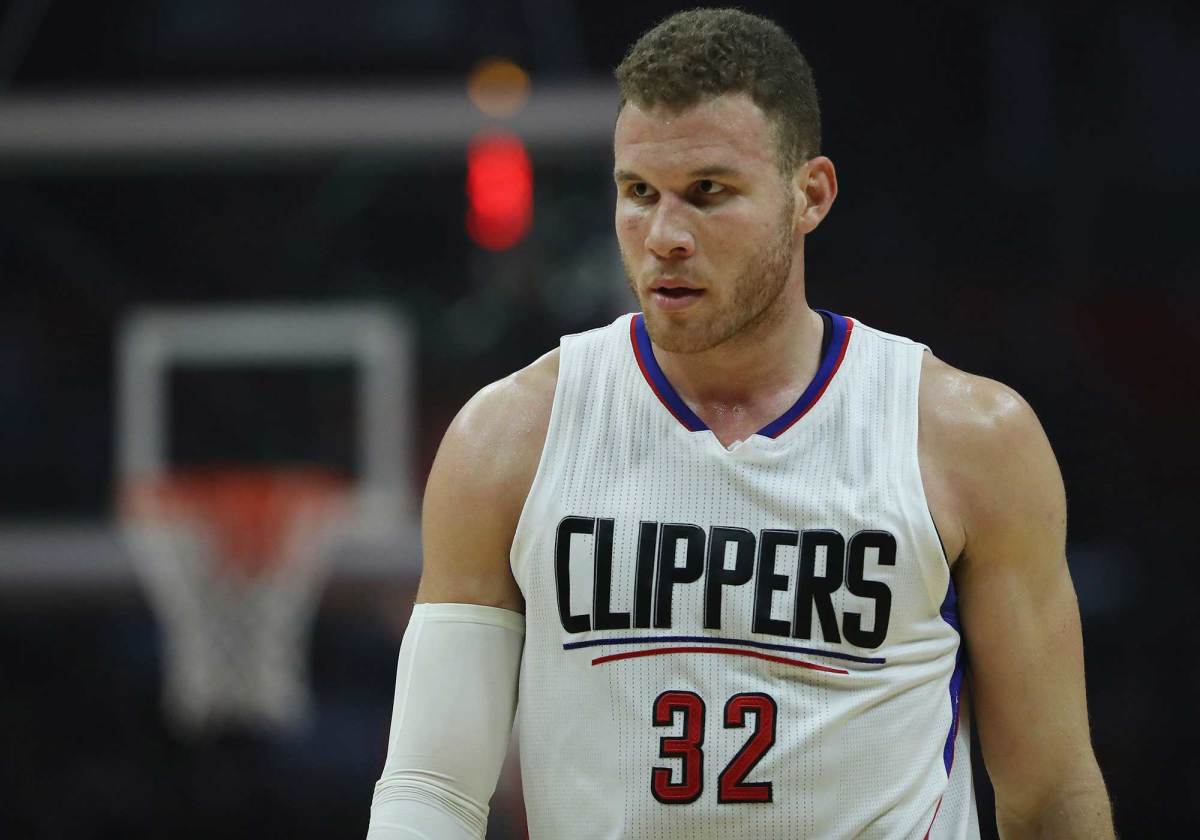2017 NBA Playoffs: The Eight Biggest Questions

After months of anticipation, the NBA playoffs will commence on Saturday.
Let’s preview the eight first-round matchups by digging into one burning question apiece, starting in the East. Also be sure to check out our entertainment rankings for the first-round series and Andrew Sharp's 10 most intriguing players.
1. Are the Celtics at risk of an upset?
Let’s acknowledge this up front: The Bulls endured a nonsensical offseason, a bewildering trade deadline and a lackluster regular season on the whole. Indeed, their 41-41 record and the fact that they needed to beat a half-dead Nets team just to make the postseason perfectly encapsulates the depth of their mediocrity. They struggle mightily whenever Jimmy Butler leaves the court and a good chunk of the season-opening rotation is now orbiting Russell Westbrook in Oklahoma City thanks to the Cameron Payne trade. Chicago absolutely backed into the East’s No. 8 seed: Detroit was more than happy to go fishing and Miami would have made it if not a Dion Waiters injury.
More importantly, though, Boston backed into the East’s No. 1 seed too. The Bulls might be fundamentally flawed in multiple ways, but the Celtics are uniquely vulnerable. Their +2.6 point differential is easily the lowest mark for a No. 1 seed over the last decade, well below the previous low of +4.4, set by the 2014 Pacers, who needed seven games to eliminate a shaky Hawks team in the first round. What’s more, the +2.2 point differential gap between the Celtics (+2.6) and the Bulls (+0.4) is smaller than the gaps between two recent notable No. 1 vs. No. 8 upsets: the 2011 Grizzlies over the Spurs (+3.4 gap) and the 2012 Sixers over the Bulls (+4 gap). That gap also happens to be smaller than six of the other seven 2017 first-round match-ups, with only the Clippers vs. Jazz series (+0.4 gap) being closer.
There are a few points of concern for Boston. First, they face all the pressure as the No. 1 seed. Second, their best player, All-NBA candidate Isaiah Thomas, ranks as the league’s worst point guard when it comes to Defensive Real Plus-Minus and has yet to win a playoff series. Third, their offense lacks a second go-to scorer and is heavily reliant upon three-pointers even though Boston ranks only 14th in three-point percentage. Fourth, Butler is the best all-around player in the series and he’s been strong in late-game scenarios this year, ranking seventh in clutch points and carrying the Bulls to a succession of wins over quality opponents (including a series split with the Celtics). Fifth, Boston GM Danny Ainge opted to sit tight at the deadline while Cleveland, Toronto and Washington all made upgrades. That inaction contributed to a cooling period that somehow saw Chicago post a better point differential after the All-Star break than Boston.
The Celtics should still win this series: They are deeper, more reliable, more explosive, and they possess home-court advantage. But it would be far more surprising if this series was a cakewalk rather than if it turns into a dogfight.

2. Has everyone forgotten about Cleveland’s offense?
The vast majority of the pre-playoffs noise around the Cavaliers has centered on their abysmal defense since the break. Totally fair. It’s crazy that also-rans like the Magic, Knicks, Sixers and Kings could all have stingier defenses since the All-Star break than the 29th–ranked Cavaliers, even if the defending champions clearly downshifted into third gear.
NBA Playoffs: The 10 Most Intriguing Players
But that’s only half the story. Despite their shaky play over the last few months, Cleveland still possessed an insanely good offense. Consider: Cleveland’s 113.6 offensive efficiency rating is better than any of the last 10 title-winners, including the 2013 Heat (112.3) and the 2015 Warriors (111.6). In addition, the Cavaliers have attempted more three-pointers and connected at a better rate than the Warriors this season. Mike D’Antoni’s Rockets and the Warriors’ Splash Brothers tend to get most of the attention when it comes to long-distance proficiency, but Cleveland is now in position to go shot for shot with anybody. LeBron James is having his best three-point shooting season in years, Kyrie Irving and Kevin Love are proven shooters, newcomer Kyle Korver is renowned for his knockdown ability, and J.R. Smith, Iman Shumpert, Channing Frye and Deron Williams are all capable spacers.
Aesthetically, the 2017 Cavaliers should be the opposite of the injury-ravaged 2015 Cavaliers, who turned to ground-and-pound ball to reach the Finals. If Cleveland even comes close to reaching its offensive ceiling over the next two months, it shouldn’t need an elite defense to get through the East. More immediately, the Cavaliers should feel confident in their ability to outgun the Pacers, who conceded more threes than they made this season.
3. How will Kyle Lowry look alongside Toronto’s midseason additions?
Most of the “flip-switching” talk in recent weeks has centered around the Warriors and Cavaliers, and for good reasons: Golden State is welcoming back Kevin Durant to the league’s most loaded roster while Cleveland gets to bask in LeBron James’ six-year intra-conference invincibility. That said, Toronto really shouldn’t be left out of this conversation. It’s not so much that the Raptors can flip a switch, it’s more that they added some new lamps to a well-lit room back in February and haven’t yet had the chance to turn on all of the lights at the same time.
For context, All-Star point guard Kyle Lowry logged a grand total of 28 minutes with the Raptors’ two midseason acquisitions, Serge Ibaka and P.J. Tucker, due to a wrist injury that sidelined him from mid-February to early-April. Ideally, that trio will log that many minutes together, or more, over the first two games of a first-round series against Milwaukee, as all three are experienced, hard-nosed, intelligent two-way contributors who help Toronto reach its maximum lineup versatility.
Raptors skeptics would rightfully point out how difficult it can be to foster new chemistry under the postseason lights, especially against a young and talented underdog like the Bucks who feature a do-everything, All-NBA match-up nightmare in Giannis Antetokounmpo and enter the playoffs with a decent amount of positive momentum. The optimist’s view, however, is that Toronto—much like Golden State and Cleveland—might not yet have had the chance to play its best basketball of the season. If that proves to be the case, the Cavaliers and Raptors could be headed for a very intriguing second-round matchup.

4. Will Washington’s league-leading lineup prove to be a blessing or a curse?
Here’s another remarkable number in a season full of them: Washington’s preferred starting lineup of John Wall, Bradley Beal, Otto Porter, Markieff Morris and Marcin Gortat logged a league-leading 1,347 minutes together, which is an eye-popping 467 more minutes than the NBA’s No. 2 most-used lineup (Minnesota’s starters before Zach LaVine got hurt). Keep digging, and you’ll discover that Washington’s starters are a strong +8.5 this season, better than Cleveland’s most-used group (+6.2 for the Big 3 plus Tristan Thompson and J.R. Smith) and Boston’s most-used quintet of Isaiah Thomas, Avery Bradley, Jae Crowder, Amir Johnson and Al Horford (+6.2).
NBA Playoffs: Ranking The First-Round Series
Put simply, Washington’s best five has played more effectively and played far more minutes together than its top competition in the East. Its first-round opponent, Atlanta, doesn’t have a single five-man group that has logged even 450 minutes together this season. Near-perfect health is clearly a major factor here, as all five Wizards starters appeared in 76 or more games this season. Another factor is this group’s excellent balance: Washington’s starters include five reasonable scoring threats, multiple ball-handlers and initiators (Wall and Beal), multiple spacers (Beal, Porter and Morris), a good interior finisher (Gortat) and good interchangeability between the guards and forwards. The Wizards can lean so heavily on a single lineup because it matches up well with big lineups and small lineups alike, and because it doesn’t include any obvious weak links. This is a squad.
This level of reliance on a single group, though, can be problematic. One injury, even a minor one, changes the entire equation. So does foul trouble or a possible ejection if things get chippy. While Kelly Oubre has provided good minutes in place of Morris when called upon, he’s still green and the Wizards’ other reserves are, generally speaking, even less trustworthy. Being able to shift in and out of different looks as matchups warrant is also a key feature of a contender. Both Cleveland and Toronto have this ability. Washington, however, might not, and on paper its rotation looks susceptible to curveball lineups that can put Gortat in difficult defensive situations. Will the Hawks be able to crack the Wizards’ proven formula? Maybe not, but a team that caps out at 50 wins with excellent continuity and health is almost certainly going to be exposed by someone with greater depth and/or versatility.
5. Will Golden State’s lack of clutch reps matter?
The bar should be set really, really, really, really high for the Warriors, who just posted the best point differential since the 1996 Bulls and the fourth-best point differential in NBA history. Maybe this goes without saying, but Golden State is as deep into “title or bust” territory now as it’s even been, in part because of the Kevin Durant poaching and in part because it feels impossible for a team to win 140 games over two seasons and not have a ring to show for it. The Warriors have the most talent, good health, home-court advantage throughout the playoffs, strong head-to-head showings against virtually all of their conference foes, and a 2,000-pound chip on their shoulders after their meme-generating Finals collapse. There are no excuses.
Golden State’s regular-season dominance and Durant’s fluky knee injury have put the player and team in an unusual situation. This year, the Warriors played a league-low 25 clutch games and Durant appeared in just 66 minutes of clutch play (a game within five points either way in the last five minutes or overtime). By comparison, Durant played in at least 144 clutch minutes in each of his last five healthy seasons in Oklahoma City, meaning he had well below half as many crunchtime repetitions as he’s become used to this season. In that small sample, Durant didn’t exactly set the world on fire, shooting just 2-of-13 on threes and 44.4% overall from the field (well below his 53.7 FG% for the season). As a team, Golden State posted a strong 16-9 record in clutch games, but that was far short of their 30-4 clutch record last season and not as good as their 23-8 clutch record in 2014-15.
There’s little doubt that the Warriors’ best five—Durant, Stephen Curry, Klay Thompson, Andre Iguodala and Draymond Green—is the most devastating lineup in basketball. Over the next few weeks, as the Warriors ramp up from their smooth jog regular-season pace, it will be worth keeping an eye on how they play in close games, especially on the road. If Curry remains involved and Durant plays comfortably and more efficiently in closing time, it will quickly become even more difficult to envision anyone other than the Warriors taking home the Larry O’Brien trophy. The No. 8 seed Blazers will need to get center Jusuf Nurkic back on the court and to play their best defense of the season to have a shot at making things even mildly interesting.

6. How long can Tony Parker keep the vultures at bay?
Big picture, the Spurs’ ability to follow a sensational regular season with a similarly impressive postseason will fall on Kawhi Leonard’s shoulders first. The 2017 MVP candidate must exert significantly greater influence on the gameplay than he did late during a 2015 first-round loss to the Clippers and a 2016 second-round loss to the Thunder. Pick an alpha dog cliché—“He has to be The Man now” or “He has to go down shooting”—and it will need to apply if San Antonio, the league’s second-best team, is going to get through James Harden, Kevin Durant, or LeBron James (or possibly all three) to shock the world and win the title.
But even these Spurs, with their lone All-Star and many aging parts during the first post-Tim Duncan year, are a collective. While Leonard will do the heaviest lifting, he can count on ample amounts of help from the chronically underrated LaMarcus Aldridge and San Antonio’s other supporting pieces. The biggest question mark, given San Antonio’s potential playoff path, is Tony Parker, who at 34 averaged the fewest minutes of his career, posted his lowest PER since his rookie season, and had his worst True Shooting % since he was a teenager. Even though the Spurs performed better both offensively and defensively with Patty Mills on the court and even though he missed roughly a quarter of the season due to multiple minor injuries, Parker remained in a starting role.
2016-17 NBA Grades: Analyzing All 30 Teams
Parker’s recent postseason track record is full of holes. In 2015, he had multiple no-shows against the Clippers. Last year, he was ineffective more often than not against the younger and more explosive Thunder. San Antonio should have the ability to hide him off the ball defensively in the first round against the Grizzlies and perhaps even at times in the second round against Houston (or Oklahoma City), but that won’t be an option against Golden State and/or Cleveland if San Antonio keeps advancing. Spurs coach Gregg Popovich was unsentimental in his treatment of Duncan’s playing time last year, limiting his minutes, sometimes considerably, as matchups warranted. Is Parker headed down the same road this year? And will Mills be up to the task once San Antonio advances into deeper water against tougher competition?
7. How many minutes will Russell Westbrook play?
No coach exercised more restraint this season than Oklahoma City’s Billy Donovan, who somehow managed to keep Russell Westbrook to 34.6 MPG. Nineteen (!) different players averaged more playing time than the Thunder’s MVP candidate this season, despite the fact that Oklahoma City regularly fell apart whenever he left the court. When Westbrook rested, the Thunder’s offensive efficiency dropped by a whopping 10.5 points and its defensive efficiency dropped by 1.8 points. With Westbrook on the court, the Thunder’s offense was equal to the league’s 11th–best attack. With him on the bench, Oklahoma City’s offense dropped to dead last by a mile.
Given Westbrook’s general brilliance, his record-breaking usage rate and Oklahoma City’s lack of capable back-ups, there’s good reason to believe that the Thunder’s record would have been even better if Donovan had leaned more heavily on his best player. But this approach succeeded on multiple fronts: Oklahoma City comfortably made the playoffs, Westbrook held up for 81 games, and he still had enough time to secure his triple-double average for the season.
Now that it’s do or die time, Donovan is free to fully unleash Westbrook, who has averaged 37.7 MPG during his postseason career. At what point, exactly, would playing Westbrook produce diminishing returns? 40 MPG? 42 MPG? Would anyone really fault the Thunder if Westbrook averaged 44 MPG, as LeBron James did for the Heat during the 2011 playoffs? Westbrook’s ability (or inability) to maintain Oklahoma City’s offensive efficiency under a greater minutes load might very well prove to be the deciding factor in the Thunder’s first-round upset bid against the Rockets. With Westbrook on the court, Oklahoma City has a chance to trade punches with Houston’s high-powered, James Harden-led attack. Without him, they’re clearly overmatched.

8. Can 2015 Blake Griffin make a reappearance?
Let’s put aside the “Clippers are headed for an inevitable blowup” screeching for a moment. There’s no doubt that, after a humbling 0-4 season series with the Warriors, a possible second-round showdown with their Pacific Division rivals looks like a death sentence that could fracture LA’s core for good come July. The more urgent question, the one that directly impacts LA’s ability to advance to face Golden State, is whether Blake Griffin can rekindle the sensational form he last displayed during the 2015 playoffs.
Griffin is the latest example that two years in the NBA can feel like an eternity. In 2015, he averaged 25.5 PPG, 12.7 RPG and 6.1 APG while shooting 51.1 FG% and logging nearly 40 MPG as the Clippers fell one win short of the West finals. Griffin was everywhere during that 14-game stretch against the Spurs and Rockets, getting out in the open court, making plays for his teammates with his passing, putting constant pressure on opposing frontlines with his rebounding, and exerting maximum influence with his physicality and energy. After dialing it back a bit during the 2014-15 season, Griffin went all out for a month straight and it was a site to behold.
Since then, he’s undergone multiple surgeries, been fined and suspended for punching a team employee, broken down during the 2016 playoffs issued a public apology to Clippers fans, and missed 68 games over the last two regular seasons. He’s missed out on both All-Star and All-NBA honors and fallen off the radar. Nevertheless, his 2016-17 stats are nearly identical to his 2014-15 numbers, and he’s been healthy since he returned from a minor knee surgery in late-January. His first-round positional matchup is favorable too: Utah’s Derrick Favors hasn’t logged 30 minutes in a game in more than a month, Boris Diaw has shown major signs of age-related decline this season, and the Jazz’s other roster pieces lack the experience and physical tools to handle him one-on-one. Griffin should have every opportunity, then, to be a decisive force in this series much like he was against the 2015 Spurs. If he proves he still has his fastball, Griffin should solidify his spot near the very top of this summer’s most coveted free agents. If not, the offseason blowup talk will be irrepressible.
